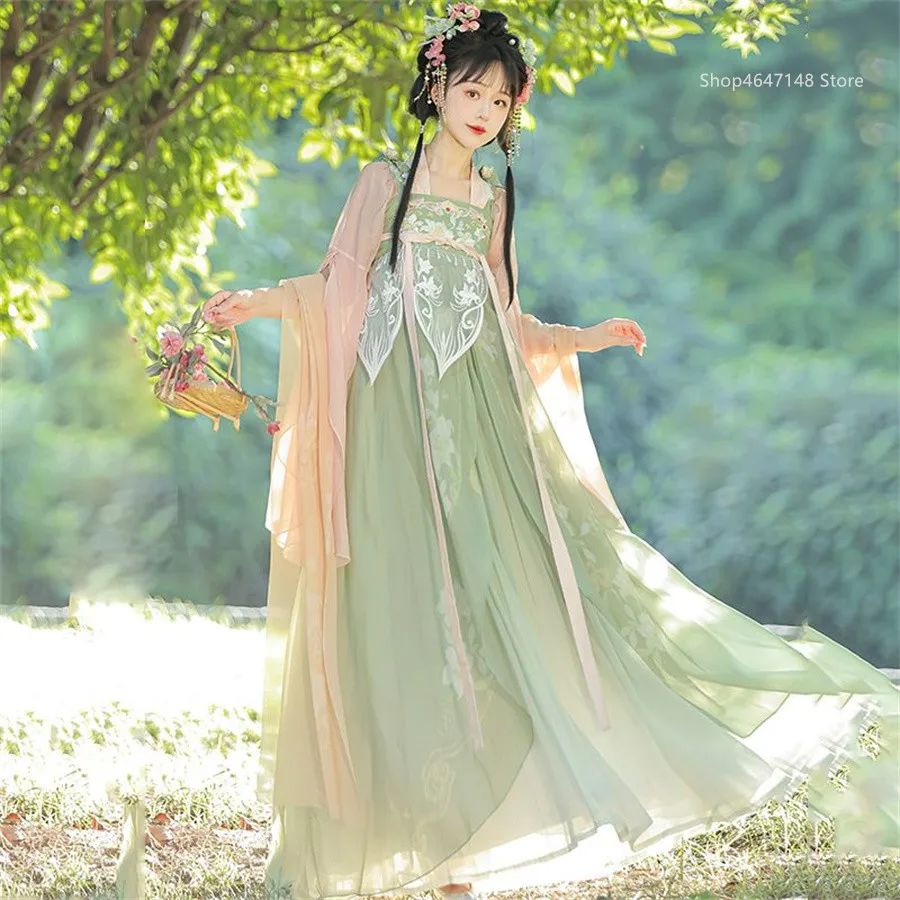The Tang Dynasty Era
The Tang Dynasty (618-907 AD) is renowned for its significant cultural and artistic achievements, which are prominently reflected in the clothing styles of the time. Tang Dynasty dress is celebrated for its grace and elegance, characterized by flowing lines and intricate details that embody the sophistication of the era.

During the Tang Dynasty, clothing was a clear indicator of social status, with formal attire reserved for the elite. Women’s fashion typically featured long, flowing robes with wide sleeves, while men’s clothing included short robes or jackets paired with long pants or skirts.
Footwear in the Tang Dynasty
Xue (靴), Lü (履), and Quekua (缺胯)
Footwear was an integral part of daily attire in ancient China, designed to align with occasion and status. During the Tang Dynasty, shoes like lü (formal shoes) and ji (high wooden clogs) were common. Shoes with curled upward tips also gained popularity and became a notable fashion trend.
The period saw innovations in footwear influenced by northern nomads, who introduced leather boots called xue. The quekua was an open-collared robe with tight sleeves, complemented by a hood and cape. These items frequently appeared in tomb inventories from the Tang Dynasty.
Men’s clothing during this period included robes, shanku (jackets with trousers), and xiku (jackets with trousers). Women typically wore the ruqun (a lined jacket with a long skirt) and shanqun (a shirt with a long skirt). Tomb inventories reveal various clothing styles, including fangyi (square garments), shan (shirts), and various vests, jackets, and trousers.
Distinctive black gauze hats with flat tops and ear flaps became fashionable for both men and women. These hats were a stylish accessory, reflecting the era’s fashion sensibilities.
Distinctive Features of Tang Dynasty Dress
The Tang Dynasty is renowned for its use of bright, vivid colors and bold patterns, often featuring intricate embroidery and elaborate designs. These designs showcased a variety of motifs, including dragons, phoenixes, flowers, and mythical creatures. Silk was the primary material for clothing, often adorned with gold and silver threads or beads, highlighting the luxurious nature of the garments.
Accessories played a significant role in Tang Dynasty fashion. Women’s hairstyles were often elaborate, incorporating complex arrangements of flowers, jewels, and hairpins. Jewelry, including necklaces, bracelets, and earrings made from precious metals and gemstones, was also a crucial part of the ensemble.
Despite the ornate nature of Tang Dynasty dress, practicality and comfort were important considerations. Clothing was designed for ease of movement, with loose-fitting garments and adjustable layers to ensure comfort.
Legacy and Influence
Today, Tang Dynasty dress continues to symbolize China’s rich cultural heritage and inspires modern fashion designers. Its enduring elegance and grace capture the spirit of an era long past, underscoring its lasting appeal and influence on contemporary fashion.
